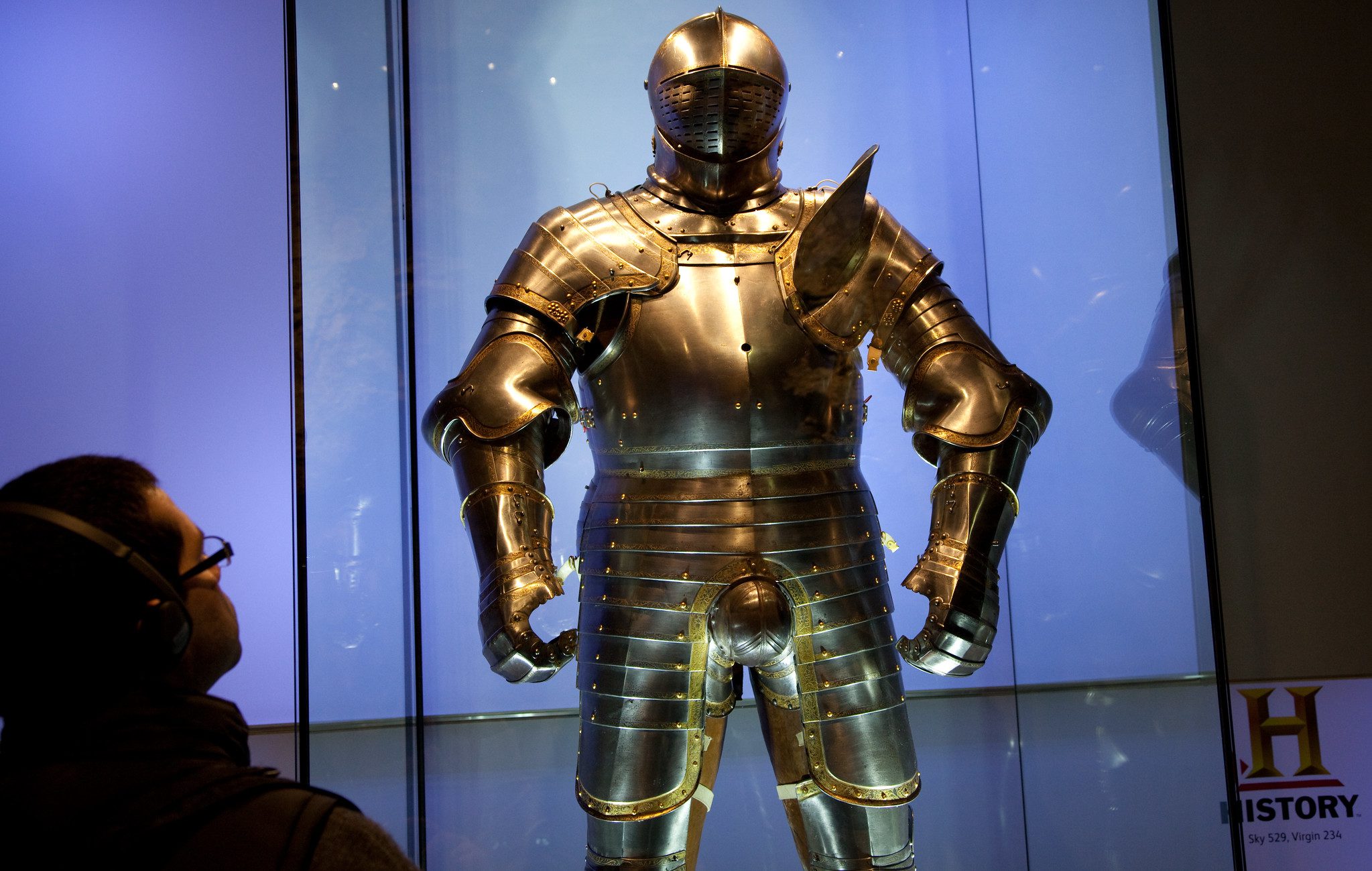Take a look at any “great man” of 16th-century European history and there’s a chance your eyes will be drawn southwards to his nether regions, where you’ll see a bulbous mound. Known as a codpiece, this item was a must-have for any serious Renaissance king looking to promote and protect his virality.
The accessory is known as a codpiece because “cod” was old slang for the scrotum. It was vaguely similar to a modern-day jockstrap and would be on the crotch of men, often held in place with buttons or ties.
Codpieces had humble and practical origins in the late Medieval period, as explained by Dr Victoria Bartels, a historian of early modern Europe from the University of Cambridge. Around the 15th century, men would often wear wool or linen leggings that would reach the top of their thighs.
To cover the gap in between, some would sow a triangular-shaped piece of cloth called a “braye.” Men’s tops eventually became shorter and this piece of fabric became more prominent, eventually evolving into a feature of all itself.

It’s hard to ignore the glaringly sexual connotation of the codpiece and the power dressers who donned them. By the 16th century, the taste for codpieces went into hyperdrive and it quickly grew to become a symbol of in-your-face masculinity.
They would be decorated, bejeweled, embroidered, upholstered, and generally made to look as visually prominent as possible.
One of the most notorious codpiece fans was Henry VIII, the King of England from 1509 until 1547 known for his troublesome marriages. Many paintings of this larger-than-life monarch exist and most feature his iconic bulging groin.
Securing the bloodline was a top priority for monarchs, as it still is, so Henry VIII was keen to show off his potential to father strong children. He also wanted to promote the image of him being a true “Renaissance man” who could wield a sword just as well as he could write a beautiful song and ponder life’s big questions. Along with being educated and artistic, the ideal of the Renaissance man strived to be gallant and virile. What better way to express this than a bulging crotch?
Arguably one of the most famous codpieces in history is found on the armor of Henry VIII, which is boldly displayed in the Tower of London. Many other suits of European armor from this era also feature this protective codpiece to protect the soldiers’ jewels (and no doubt make a statement about their masculinity).
The heyday of the codpiece was short-lived, however. By the end of the 16th century, the codpiece started to become somewhat of a fashion faux pas and was even mocked by some of society’s brightest minds.
In the 1580s, the prominent French philosopher Michel de Montaigne reportedly described the accessory as “empty and useless,” adding: “What was the meaning of that ridiculous part of the breeches worn by our fathers?”
Fashions have a habit of going in cycles. Jeans, it seems, are in a constant revolution of going from baggy to tight and back to baggy again. Mullets, for some reason, are back in. While some fashionistas have dabbled with the idea of bringing back the codpiece, it’s safe to say it has never enjoyed the same unbridled success it saw in 16th-century Europe and its desperately self-affirming kings.
Source Link: How Codpieces Became The Must-Have Jockstrap For Royal Crotches